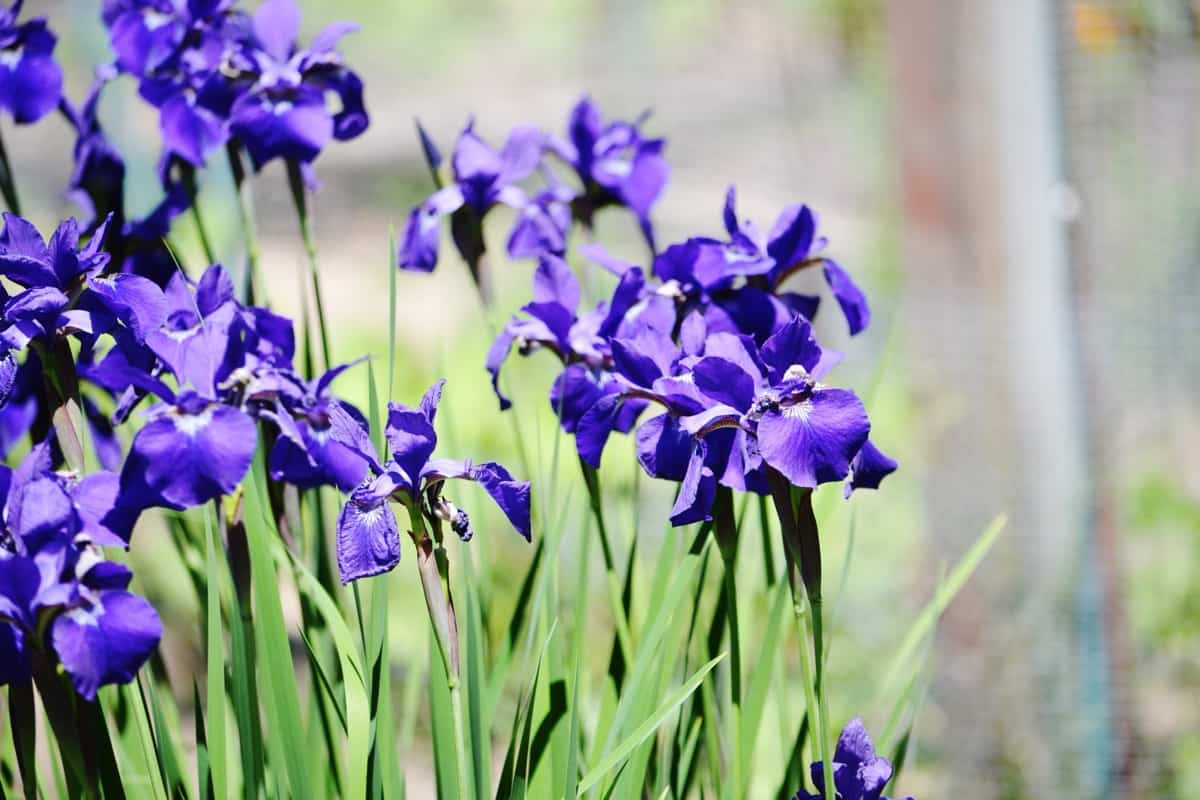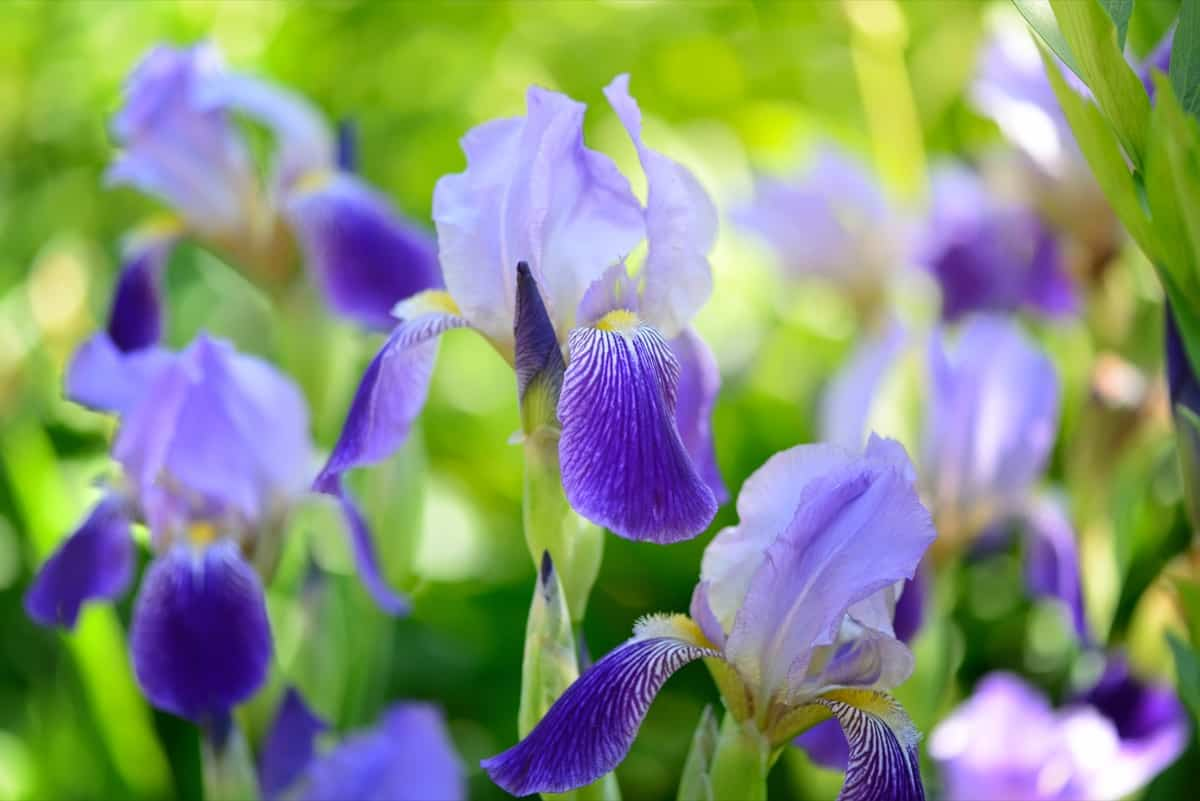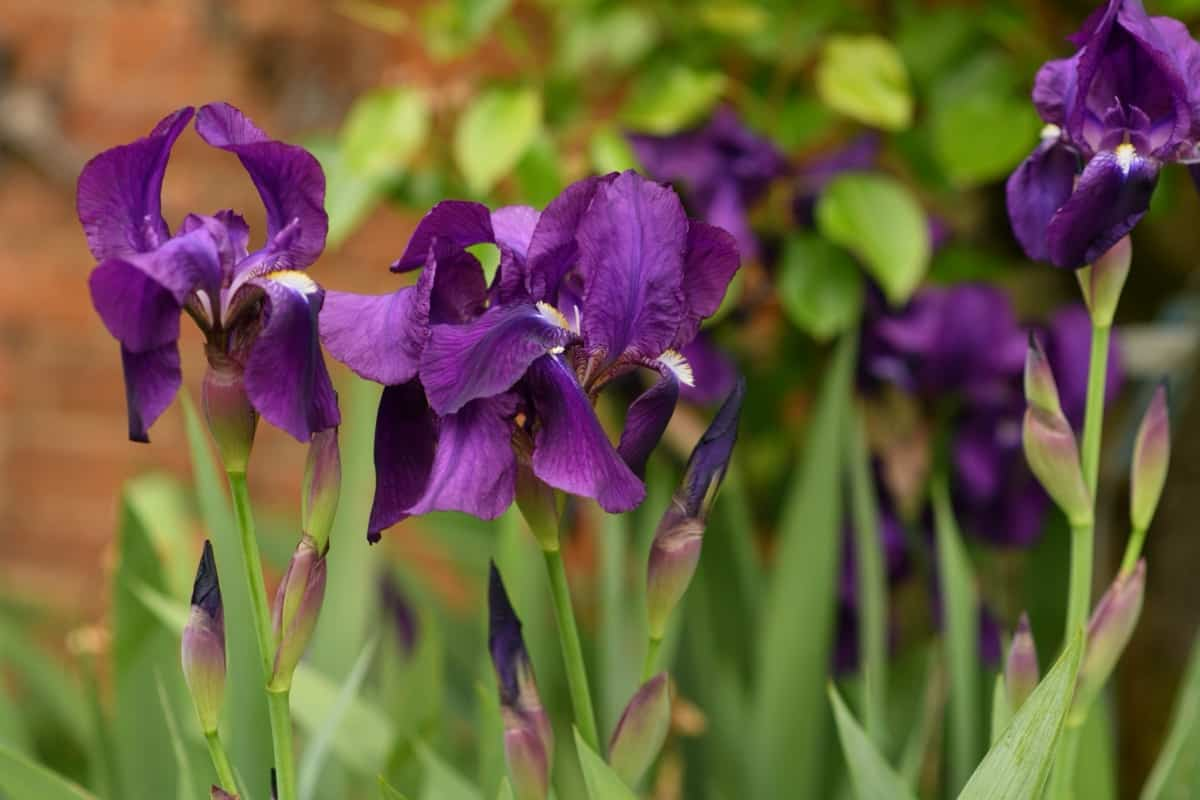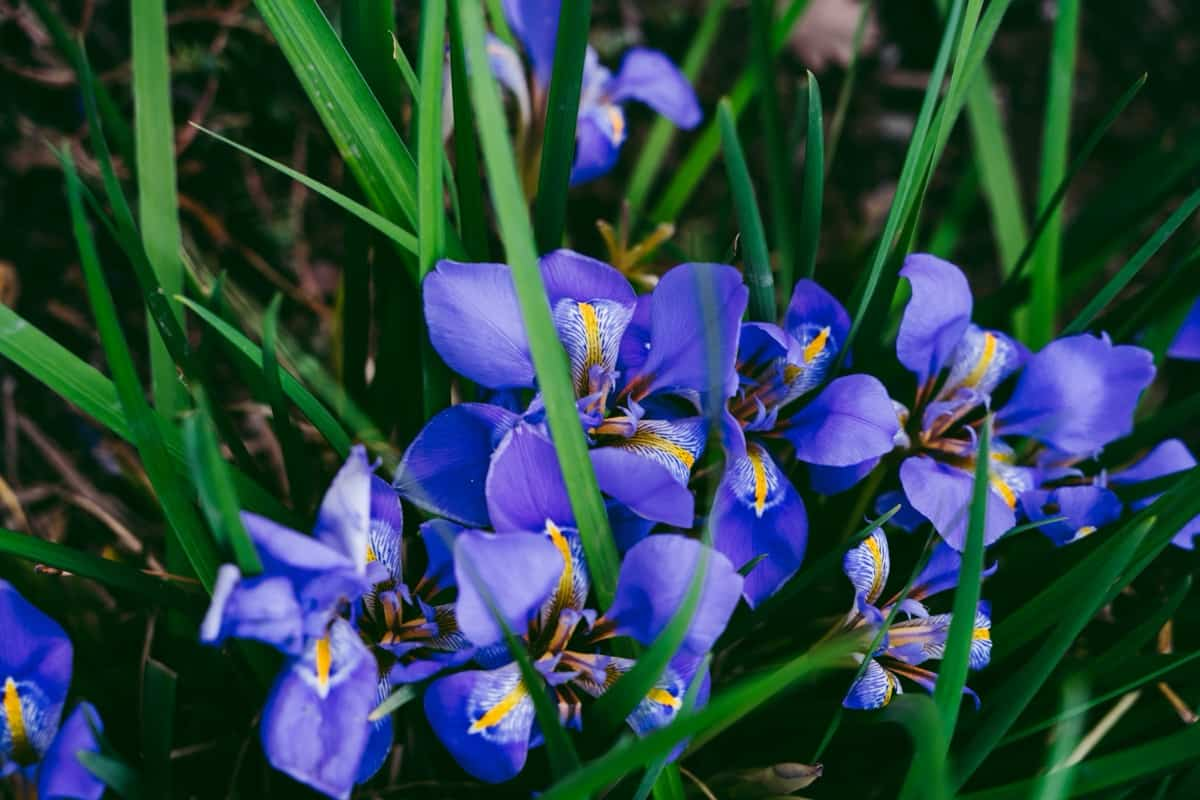You have arrived at the world of Iris care and getting rid of pests. We’ll talk about effective natural and organic ways to get rid of Iris pests in this help. To keep your lovely Iris flowers safe, you need to know a lot about plants and also care about gardening in an eco-friendly way. Let’s look into safe, long-lasting ways to make an iris plant grow well.

How to Control Iris Pests Naturally
Understanding Iris Pests: Identifying Common Pests and Their Damage
Many bugs can damage iris flowers and make them look bad. To eliminate pests effectively, you need to recognize these common ones. The Iris borer and aphids are two common pests that do this. The Iris borer, a nasty caterpillar, digs into the plant, turns it brown, and wilts. Conversely, aphids eat plant sap and make a sticky waste product that mold likes. Regular checks and quick action are needed to stop damage before it happens. Neem oil and growing Iris flowers with pest-repelling herbs can help protect your prized blooms and ensure they stay bright and long-lasting.
Iris Pest Control with Natural and Organic Treatment
| Pest/Disease | Type | Organic Treatment |
| Aphids | Insect | – Use a strong stream of water to dislodge aphids from plants. Introduce beneficial insects like ladybugs or lacewings. |
| Bacterial soft rot of Iris | Bacteria | – Remove and destroy infected plant parts. Improve drainage to prevent waterlogged soil. |
| Blight (southern), “white mold” | Fungus | – Prune affected leaves and maintain good air circulation. Apply a copper based fungicide. |
| Iris borers | Insect | – Handpick and destroy caterpillars and eggs. Apply nematodes that prey on borer larvae. |
| Iris weevils (“flag weevils”) | Insect | – Handpick adult weevils and remove them from plants. Encourage natural predators like bords in the garden. |
In case you missed it: How to Control Kale Pests Naturally: How to Get Rid of Them with Natural and Organic Treatment

Recommended Varieties
Tall Bearded Irises (Iris germanica)
- Immortality: has fragrant white flowers that bloom twice in the summer, in early and late summer. It can survive in Zone 4.
- Feed Back: dark purple flowers smell nice and can grow in Zones 4 to 9.
- Earl of Essex: has white flowers with purple edges. It can thrive in Zones 3 to 10.
- Jennifer Rebecca: has mauve pink flowers and can grow in Zones 4 to 9.
Irises from Siberia (I. sibirica)
- Blueberry Fair: have blue flowers with ruffles. They can thrive in Zones 3 to 8.
- Fond Kiss: has white flowers with a pink flush. It can grow in Zones 3 to 8.
Irises Japanese (I. ensata)
- Coho: have pink flowers with a gold flush. They can thrive in Zones 4 to 9.
- Variegata: has dark purple-red flowers and can grow in Zones 4 to 9.
Prevention is Key: Implementing Effective Strategies to Control Iris Pests
Keeping Iris pests away is important for keeping your garden healthy and beautiful. To effectively get rid of these pests, choose the right plants and leave enough space between them to make them less vulnerable. Check your iris plants often for signs of pests like aphids or iris borers, and remove any damaged leaves immediately. As a biological control tool, you should use natural predators like ladybugs.
Pests can be kept away from your yard by keeping it clean, removing plant debris, and ensuring enough airflow. Chemicals like neem oil or soaps that kill insects should only be used rarely and as a last option. Taking preventative steps and finding pests early are the best ways to keep your Iris yard pest-free and healthy.
Natural Remedies for Iris Pest Control: Harnessing the Power of Companion Planting
Companion planting is a natural way to keep pests from iris plants that work well. You could plant marigolds between the plants to keep Irish pests like aphids and thrips away. Their smell keeps these bugs away. Additionally, garlic and chives naturally keep bugs away when grown with iris flowers.
The fragrant herbs not only keep pests away but they also make the dirt healthier. The ladybug, which naturally eats aphids, is another good friend. By making an ecosystem diverse and well-balanced around your iris plants, you can keep your yard healthy and beautiful without using chemicals to eliminate pests.
Organic Treatments for Iris Pests: Utilizing Safe and Environmentally Friendly Solutions
Organic treatments for Iris pests are essential for maintaining these exquisite flowers’ health and beauty while minimizing environmental harm. To combat common pests like aphids, iris borers, and snails.
- Neem Oil: A natural insect repellent, it disrupts pest feeding and their life cycle.
- Diatomaceous Earth: A fine powder that dehydrates and kills pests upon contact. Sprinkle it around your Iris plants.
- Companion Planting: Planting garlic, chives, or marigolds near your Irises can deter pests with their natural aromas.
- Beneficial Insects: Attract ladybugs, lacewings, and parasitic wasps to your garden. They prey on Iris pests.
- Organic Soaps: Use insecticidal soaps to control soft-bodied pests like aphids. These soaps are gentle on the environment.
In case you missed it: How to Control Carrot Pests Naturally: How to Get Rid of Them with Natural and Organic Treatment

Creating a Healthy Garden Ecosystem: Attracting Beneficial Insects to Combat Iris Pests
Creating a healthy garden ecosystem that attracts beneficial insects is essential for combating Iris pests naturally. Plant nectar-rich flowers like marigolds and daisies to foster a thriving ecosystem to provide food sources. Additionally, maintains diverse plant species to offer various habitats and encourage biodiversity.
Beneficial insects, which are ladybugs, lacewings, and parasitic wasps, are vital in controlling Iris pests like aphids and thrips. Avoid using chemical pesticides, which can harm beneficial insects. Finally, providing water sources and reducing light pollution at night will further support these helpful insects, creating a balanced ecosystem that safeguards your Iris flowers naturally and effectively.
Homemade Pest Repellents: DIY Recipes to Deter Iris Pests Naturally
Common Iris pests can be kept away without using chemicals by making bug repellents. A simple recipe mixes two cups of water, one tablespoon of dish soap, and one tablespoon of cayenne pepper. This mixture can be sprayed on iris plants to keep aphids and other soft-bodied bugs away.
Spray a mixture of 1 part ammonia to 3 parts water near the plants to eliminate snails and slugs. Crushed eggshells or diatomaceous earth can also be put around the base of Iris plants to keep pests away. Eco-friendly, safe for plants, and a natural way to keep Iris flower pests away, these do-it-yourself methods are great.
Physical Barriers and Traps: Physical Methods to Keep Iris Pests at Bay
- Copper Barriers: Wrapping copper tape around plant containers or beds repels slugs and snails, common Iris pests.
- Row Covers: Use row covers to shield Iris plants from flying insect pests like aphids and thrips.
- Sticky Traps: Deploy yellow sticky traps to capture flying insects that may harm your Iris.
- Collars: Install collars made of cardboard or plastic around plant stems to deter cutworms and root-feeding insects.
- Handpicking: Regularly inspect your Iris plants and handpick any visible pests, such as caterpillars or beetles, to prevent infestations.
Soil Management Techniques: Enhancing Soil Health to Reduce Iris Pest Infestations
- Crop Rotation: Regularly changing the planting location of Irises disrupts the life cycles of soil-borne pests.
- Compost Enrichment: Adding organic compost boosts soil fertility, creating conditions where Iris plants can better resist pests.
- Natural Predators: Encourage beneficial insects like ladybugs and nematodes that prey on Iris-damaging pests.
- Proper Drainage: Well-drained soil prevents waterlogging, which can attract pests and diseases.
- pH Balancing: Maintaining the soil’s pH at an optimal level for Irises (around 6.8) can prevent pest issues.
Integrated Pest Management (IPM) for Iris
- Pest Identification: Accurate pest identification is the foundation of IPM. Identify specific pests that affect your Iris plants.
- Monitoring: Regularly inspect your Iris for pest presence. This early detection allows for timely intervention.
- Cultural Practices: Implement good gardening habits, like proper watering, spacing, and soil care, to create a healthier Iris environment that is less attractive to pests.
- Biological Controls: Encourage natural predators like ladybugs, lacewings, and beneficial nematodes to control pest populations.
- Mechanical Controls: Handpick and remove pests when possible or use traps to manage their numbers.
In case you missed it: How to Control Greenhouse Pests Naturally: How to Get Rid of Them With Natural and Organic Treatment

Frequently Asked Questions (FAQ) on Controlling Iris Pests Naturally
What is an Iris Flower?
The iris plant’s flowers, which live for an extended period, are known for being very different from other flowers. The flower is very beautiful and often brightly colored. It is in the genus Iris.
How Many Species of Iris Flowers are There?
Over 300 kinds of iris flowers can be found in the world, and many of them are cultivated varieties or hybrids.
What are the Common Colors of Iris Flowers?
There are many colors of iris flowers, from purple to blue to yellow to white and many shades in between. Some even have a lot of different colors or patterns.
When Does the Iris Flower Bloom?
Irises flower at different times depending on the species and type, but most of the time they bloom in the spring and early summer.
Conclusion
To protect iris flowers from pests, use natural and organic methods. Identify common pests like aphids and Iris borers, choose suitable plants, and provide adequate space. Use organic treatments, plant companions, DIY remedies, physical barriers, and long-term dirt management. Implement Integrated Pest Management (IPM) to control biological, cultural, and mechanical controls.
- Natural Solutions for Pest Control in Flower Gardens
- Types of Fungicides Used in Agriculture
- Common Issues in the Fruit Development Stage of Pomegranate Farming
- Fruit Development Issues in Papaya: Easy Solutions and Treatment
- Soil-Borne Diseases and How to Protect Your Plants
- Practices to Prevent Disease Spread in the Garden
- From Wilted to Thriving: How to Treat Root Rot Naturally in Houseplants
- Natural Remedies to Cure Brown Spots on Fig Tree Leaves
- Natural Solutions for Poinsettia Problems: 100% Effective Remedies